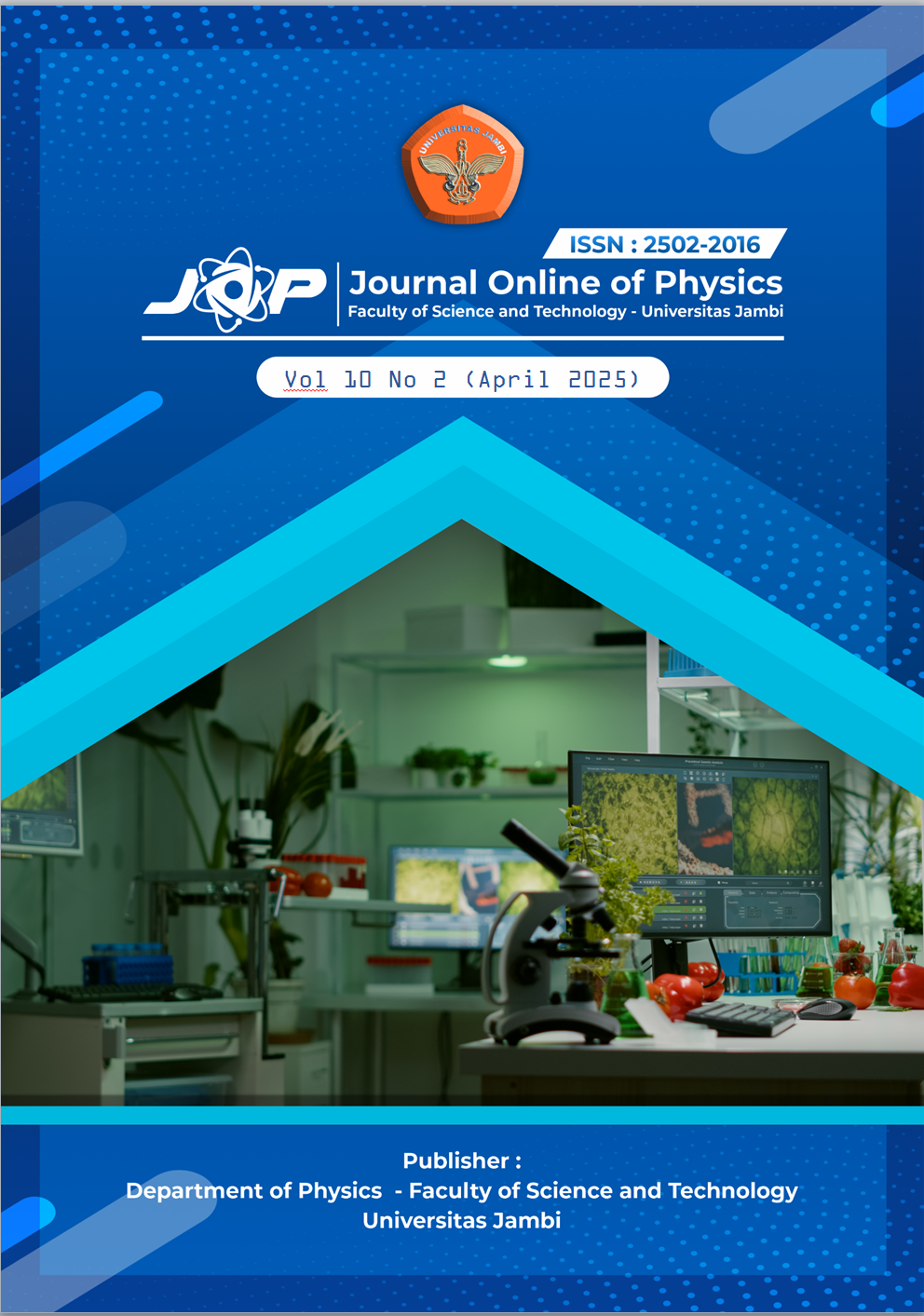POTENSI KITOSAN DARI CANGKANG INTERNAL CUMI SEBAGAI ADSORBEN LOGAM BERAT TIMBAL (Pb) DI PERAIRAN SUNGAI TALLO SULAWESI SELATAN
DOI:
https://doi.org/10.22437/jop.v10i2.38100Keywords:
Chitosan, squid internal shell, heavy metal adsorption, FTIR, Deacetylation Degree, environmentally friendly materialsAbstract
Heavy metal pollution in aquatic environments is one of the serious problems that threaten the health of ecosystems and humans. Various methods have been developed to overcome this pollution, one of which is using natural materials such as chitosan. This study aims to explore the potential of chitosan produced from squid (Loligo sp.) internal shells as heavy metal adsorbents in filtration systems. Chitosan is a biopolymer known to have a high ability to bind metal ions through its amino and hydroxyl groups. In this study, chitosan was synthesized through several processes, namely Deproteination, mineralization and deacetylation of chitin extracted from squid internal shells. The resulting chitosan was characterized using infrared spectroscopy (FTIR) to identify groups formed from the chitin deacetylation process. The results showed that chitosan based on squid internal shells has an adsorption capacity that meets the standard water content of 2%, ash content of 1% and Deacetyl Degree (DD) of 82.8%. Based on the characterization of functional groups using FTIR, the hydroxyl group -OH and the amine group (-NH2) play a significant role in the heavy metal adsorption process. Because these groups are able to form complex bonds with heavy metal ions. Application in the absorption of Pb metal in water samples of the Tallo River in South Sulawesi, obtained an adsorption effectiveness of 96.4%. Overall, chitosan from squid internal shells has the potential as a heavy metal adsorbent in water filtration applications. This study opens up new opportunities in the development of natural materials for sustainable water treatment technology.
Downloads
References
Azizati, Z. (2019). Pembuatan dan karakterisasi kitosan kulit udang galah. Walisongo Journal of Chemistry, 2(1), 10–16.
Kou, S. G., Peters, L. M., & Mucalo, M. R. (2021). Chitosan: A review of sources and preparation methods. International Journal of Biological Macromolecules, 169, 85–94.
Lestari, D. W., Rodiah, S., & Asnari, M. (2024). Pemanfaatan Kitosan Sebagai Adsorben Untuk Menurunkan Kadar Logam Tembaga (Cu), Besi (Fe), Dan Timbal (Pb). PHENOMENON : Multidisciplinary Journal Of Sciences and Research, 2(01), Article 01. https://doi.org/10.62668/phenomenon.v2i01.1120
Munirah Muhaidin, Fatin Hana Naning, Juniza Md Saad, Rafeah Wahi, & Tasiu Zangina. (2024). Heavy Metal Ion Adsorbent in Aqueous Solution: A Review on Chitosan and Chitosan Composites. Journal of Advanced Research in Micro and Nano Engieering, 18(1), 78–102. https://doi.org/10.37934/armne.18.1.78102
Ngah, W. W., Teong, L. C., & Hanafiah, M. M. (2011). Adsorption of dyes and heavy metal ions by chitosan composites: A review. Carbohydrate Polymers, 83(4), 1446–1456.
Rahmaniah, R., Isdar, E., & Rani, S. R. A. R. (2024). Sintesis dan karakterisasi kitosan berbasis cangkang landak laut sebagai kandidat absorban logam berat. JOURNAL ONLINE OF PHYSICS, 9(2), 30–36.
Rani, S. R. A. R., Ihsan, I., Asriani, A., & Riski, E. (2025). Eksplorasi limbah tulang ikan sunu sebagai sumber biomaterial kitosan: proses ekstraksi dan karakteristiknya. JOURNAL ONLINE OF PHYSICS, 10(2), Article 2. https://doi.org/10.22437/jop.v10i2.41609
Rochmawati, Z. N., Nabila, F., & Ainurrohmah, C. (2018). Karakterisasi Kitosan Yang Diisolasi Dari Cangkang Internal Cumi-Cumi. Sainteknol : Jurnal Sains Dan Teknologi, 16(1), Article 1. https://doi.org/10.15294/sainteknol.v16i1.15048
Seenuvasan, M., Suganthi, J. R. G., Sarojini, G., Malar, G. C. G., Priya, M. E., & Kumar, M. A. (2018). Effective utilization of crustacean shells for preparing chitosan composite beads: Applications in ameliorating the biosorption of an endocrine disrupting heavy metal. Desalination and Water Treatment, 121, 28–35.
SNI, B. S. (2013). Kitosan Syarat Mutu dan Pengolahan SNI 7949: 2013. BSN. Jakarta, 8.
Supriyantini, E., Yulianto, B., Ridlo, A., Sedjati, S., & Nainggolan, A. C. (2018). Pemanfaatan chitosan dari limbah cangkang rajungan (Portunus pelagicus) sebagai adsorben logam timbal (Pb). Jurnal Kelautan Tropis, 21(1), 23–28.
Taftazani, A. (2020). Adsorpsi Logam Timbal (Pb) dengan Menggunakan Karbon Aktif dari Arang Bambu Termodifikasi Oksida Besi dan Surfaktan Sodium Dodecyl Sulfate (SDS). https://dspace.uii.ac.id/handle/123456789/29375
Zhang, L., Zeng, Y., & Cheng, Z. (2016). Removal of heavy metal ions using chitosan and modified chitosan: A review. Journal of Molecular Liquids, 214, 175–191.
Zhao, X., Liu, Y., & Zhang, T. (2022). Review on preparation and adsorption properties of chitosan and chitosan composites. Polymer Bulletin, 79. https://doi.org/10.1007/s00289-021-03626-9
Downloads
Published
How to Cite
Issue
Section
License
Copyright (c) 2025 A. Ainur Fadilla, Sitti Nurrahmi, Sefrilita Risqi Adikaning Rani

This work is licensed under a Creative Commons Attribution 4.0 International License.











